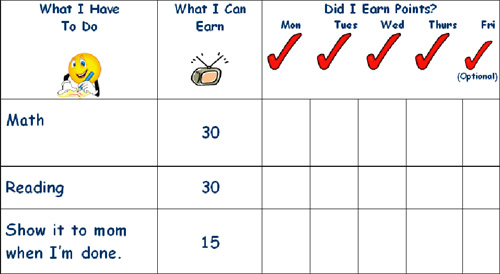If you’re like most parents at this time of year, you’re relishing the days of summer. No more homework struggles, standardized tests, or jam-packed afternoons of carting your children to and from extracurricular activities. The summer is a time to unwind and relax for parents and kids alike, but learning should not come to a halt. According to the foundation Reading is Fundamental, children who do not read over the summer experience a loss of reading fluency and comprehension skills. Students who engage in summertime reading actually gain skills. Research also shows that students who have not engaged in summer learning score lower on standardized tests at the end of summer break than they do on the exact same test at the end of the previous school year. In math, students lose approximately 2.6 years of grade level equivalency over the summer if they are not stimulated.
Sally Shaywitz, author of Overcoming Dyslexia, reports that children who score in the top 10th percentile on standardized tests read more than 20 minutes per day after school. Over a school year, that translates to 1.8 million words read! Students who read only five minutes for pleasure score near the 50th percentile. Sadly, students who read a minute or less on a daily basis after school hours read a mere 8,000 words per year and score in the lowest 10 percent. It is easy to understand why engaging in some type of instruction, whether it be structured or unstructured, is an integral part of continued academic growth. Parents can play an important role in encouraging learning throughout the summer months even if their child is a reluctant learner.
Make reading a priority
One of the most important gifts you can give your child this summer is the ability to enjoy reading. Some children are naturally eager readers; however, others would never associate “reading” and “fun”. For those children, we must pull out all the stops to foster a love of reading. It is imperative to develop structure while also giving children a choice in their reading material.
- The key to motivating reluctant readers is to find the right series of books that will pique their interests. As a parent, you know your child best. What does he love? If it’s sports, subscribe to Sports Illustrated for Kids. Perhaps your child would enjoy a sports-related book in the Matt Christopher series. Does he want to be a veterinarian? Go to the library and check out books on animals. If your child will only read a certain series of books, that’s okay; at least he’s reading. Don’t turn up your nose at your child’s choice of books; it can discourage reading.
- It’s perfectly acceptable for your child to read books he’s already read. In fact, one of the fastest ways to build reading fluency is to read a book slightly below grade level, three times. Not sure if a book is too difficult? Use the 5 finger rule. If your child mispronounces 5 or more words on a page, the book is too hard for him.
- Magazines are often the way to get reluctant readers on the page. Even magazines about video games require reading! Subscribe to publications like American Girl, Boys’ Quest, National Geographic World, Nickelodeon, or Ranger Rick and put the subscription in your child’s name.
- Most children love comic books and they are a great way to ease into reading more traditional books. Many novels now come in comic book form and kids love them! No wonder books like Diary of a Wimpy Kid are more popular than ever.
- Consider books on tape . Learning Ally (formerly Recordings for the Blind and Dyslexic) provides access to the nation’s largest audiobook library of textbooks and literature titles. You may want to monitor your child while he is listening to a book to know that he isn’t just staring into space. Children can develop fluency and a better sight word vocabulary if they are tracking the words along with the reader’s voice.
- Sign up for the summer reading program through your local library, book store, or online through Scholastic ; click on “Read for the World Record”. These programs provide structure, accountability, and incentives. Find out how many books your child is expected to read and set goals. If it’s four books, then set attainable goals, such as 25 pages per week or one chapter per day.
- Kids love computers, so use “screen time” to your advantage. Enroll your child in a structured, online reading program that’s fun, engaging, and helps to improve reading decoding, fluency, and comprehension. Check out Headsprout for ages 4 to 11 and Study Dog , also a video game format reading program for ages 4 to 8.
Don't forget writing
As with reading, there are some easy ways to keep kids writing over the summer as well.
- Purchase a journal to place by your child’s bedside. You can use it two ways. The first is simply for the child to record his daily thoughts. By doing so nightly in a relaxed environment, he’s associating writing with pleasure. Another way is to dialogue back and forth with your child by writing a note such as, “I loved the way you listened to the coach at lacrosse practice today. What’s your favorite part of lacrosse?” Take five minutes to write a note at some point during the day so that your child can respond at night.
- Encourage your child to create a scrapbook of summer events using photos, postcards, and other memorabilia. Have him write a caption below each entry telling who, what, when, where, and why the event was special. This is a great way to keep him writing and to have a wonderful keepsake from the summer.
- The summer is also an excellent time to hone keyboarding skills. Children as young as 7 can begin getting familiar with the home row keys. Good keyboarding skills are a must for children with handwriting difficulties. It allows them to get their thoughts down on paper quickly with much less struggle. Students can usually edit their mistakes more efficiently when they can see their ideas in an organized fashion on a computer screen as opposed to messy handwriting on paper. For a review of the best software for your needs, visit Top Ten Reviews .
Incorporate math and science
Math is often an overlooked part of summer learning, but one that can be easily enhanced. In order to be successful in math, students must have number sense. That means that they need to develop an understanding of mathematical concepts and the relationship between numbers, not just rote memory for facts. However, it is crucial for children to master the basics before going on to more advanced material. Fortunately, there are many fun and engaging math games that can get almost any learner hooked, even the most reluctant one.
- Board games provide an opportunity for good old-fashioned fun with your child and help to build mathematical reasoning and computation skills. Consider establishing a weekly Family Game Night. With your child’s input, post a rotating schedule so that each family member gets to plan the evening from choosing a game to making a snack. Visit Educational Learning Games for a long list of math games such as Totally Tut, Challenge 24, and Snap It Up. Additionally, games such as Connect Four, Chinese Checkers, Checkers, and Battleship assist with reasoning and logical thinking skills. Backgammon, Mastermind, Clue, and Chess exercise problem solving and higher level critical thinking. Other board games such as Life, Monopoly, Monopoly Junior, Careers, and Pay Day all incorporate money skills into their design.
- Did you know that 60% of parents give their children an allowance? Turn allowances into a great teaching tool by helping your child learn to budget, spend, and save his earned weekly allowance money. Visit Kids’ Money for a host of activities, books, and ideas from other parents about what really works.
- Incorporate math into your summer trips. Auto travel will go by quicker and kids will practice math skills if you play counting games such as “Count the Cows”. Each child counts the number of cows they see on their side of the car, but if they pass a cemetery, they lose all their cows and have to start over. The person with the highest number at the end of your trip wins. See the website Mom’s Minivan for lots of fun driving games.
- Utilize free online math games to cultivate your child’s interest in learning basic facts. Break up the monotony of flashcards with interactive games such as those on Multiplication or Funbrain . Check out reviews of math software for the best program for your child.
- If you’d like to purchase a workbook for your child, consider the Summer Bridge series . These workbooks essentially “bridge” learning from one grade to the next. For example, the book for students entering 5th grade reviews 4th grade skills and previews 5th grade basics in language arts and math.
Giving kids a break this summer is essential; however, learning should not be lost. It can be entertaining and appealing if you focus on your child’s interests. It’s also crucial to set goals and stick to them. At the beginning of the summer, decide with your child what goals you both want to accomplish. Set up a daily or weekly schedule so that learning is built into the day, just like any other activity. You may want to tie completion of a math or reading task to video games, TV, or computer time. Often, a chart like this one helps kids and parents keep track of the work that’s been accomplished and the earned privileges.

As the director of Educational Connections, a tutoring agency, I often get calls from parents who want to cram two months worth of experiences into two weeks at the end of the summer in order to get their child ready for the fall. It is really much easier to create a plan early in the summer and stick to it. If you need more structure, a tutor may be the way to go. A professional tutor can assess your child’s strengths and weaknesses and develop a program for the summer months. Weekly or biweekly sessions should contain the bulk of instruction, but fun follow-up family games or assignments can be left behind if parents wish to supplement lessons. Regardless of the approach you take this summer, the main objective is to enjoy learning!
Ann K. Dolin, M.Ed. is the president and director of Educational Connections, Inc., a tutoring company that provides in-home tutoring services to students of all ages in the Washington DC area. For more information, call 703-934-8282 or visit the Educational Connections website . Ann’s book, Homework Made Simple — Tips, Tools, and Solutions for Stress-Free Homework , is scheduled for release in August of 2010.
